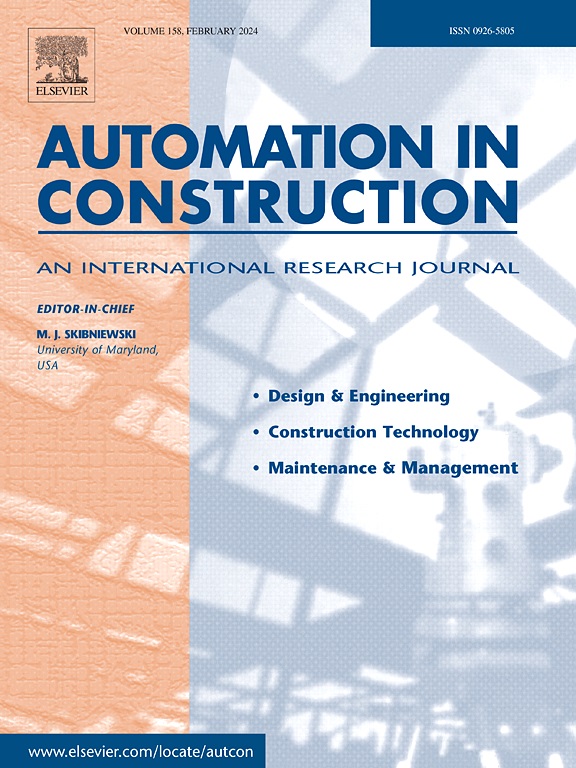生成建筑物 LOD4 模型,实现 BIM 和数字双胞胎的自动 3D 建模
IF 9.6
1区 工程技术
Q1 CONSTRUCTION & BUILDING TECHNOLOGY
引用次数: 0
摘要
本文介绍了一种基于图像的方法,用于自动生成 LOD4 级的几何建筑模型,其中包含内部和外部的几何信息。现有的方法通常侧重于外部或内部的简化几何图形,由于数据的复杂性和处理需求,导致集成方面的挑战。本方法通过使用三个运动结构模型来解决这些难题:一个是建筑外部模型,一个是建筑内部模型,还有一个是建筑入口模型。外部和内部数据分别使用平面基元进行处理,然后通过基于二维图像特征的三维点云注册方法对这些模型进行对齐。这确保了统一的坐标系和 LOD4 模型的精确生成。该框架的平均相对误差为 3.06%,平均绝对误差为 0.05 米,突出了其在数值建模、施工管理和结构健康监测等应用中的稳健性,使其在进一步推进建筑信息模型和数字孪生中具有重要价值。本文章由计算机程序翻译,如有差异,请以英文原文为准。
Generation of LOD4 models for buildings towards the automated 3D modeling of BIMs and digital twins
An image-based methodology is presented for the automatic generation of geometric building models at LOD4, incorporating both interior and exterior geometrical information. Existing approaches often focus on simplified geometries for either exteriors or interiors, leading to integration challenges due to data complexity and processing demands. This methodology addresses these challenges by utilizing three structure-from-motion models: one for the building exterior, one for the interior, and one for the entrance. The exterior and interior data are processed separately using planar primitives, and the models are subsequently aligned through a 3D point cloud registration method based on 2D image features. This ensures a unified coordinate system and accurate generation of the LOD4 model. The framework achieved a mean relative error of 3.06% and a mean absolute error of 0.05 m, underscoring its robustness for applications such as numerical modeling, construction management, and structural health monitoring, making it valuable for further advancements in building information models and digital twins.
求助全文
通过发布文献求助,成功后即可免费获取论文全文。
去求助
来源期刊

Automation in Construction
工程技术-工程:土木
CiteScore
19.20
自引率
16.50%
发文量
563
审稿时长
8.5 months
期刊介绍:
Automation in Construction is an international journal that focuses on publishing original research papers related to the use of Information Technologies in various aspects of the construction industry. The journal covers topics such as design, engineering, construction technologies, and the maintenance and management of constructed facilities.
The scope of Automation in Construction is extensive and covers all stages of the construction life cycle. This includes initial planning and design, construction of the facility, operation and maintenance, as well as the eventual dismantling and recycling of buildings and engineering structures.
 求助内容:
求助内容: 应助结果提醒方式:
应助结果提醒方式:


